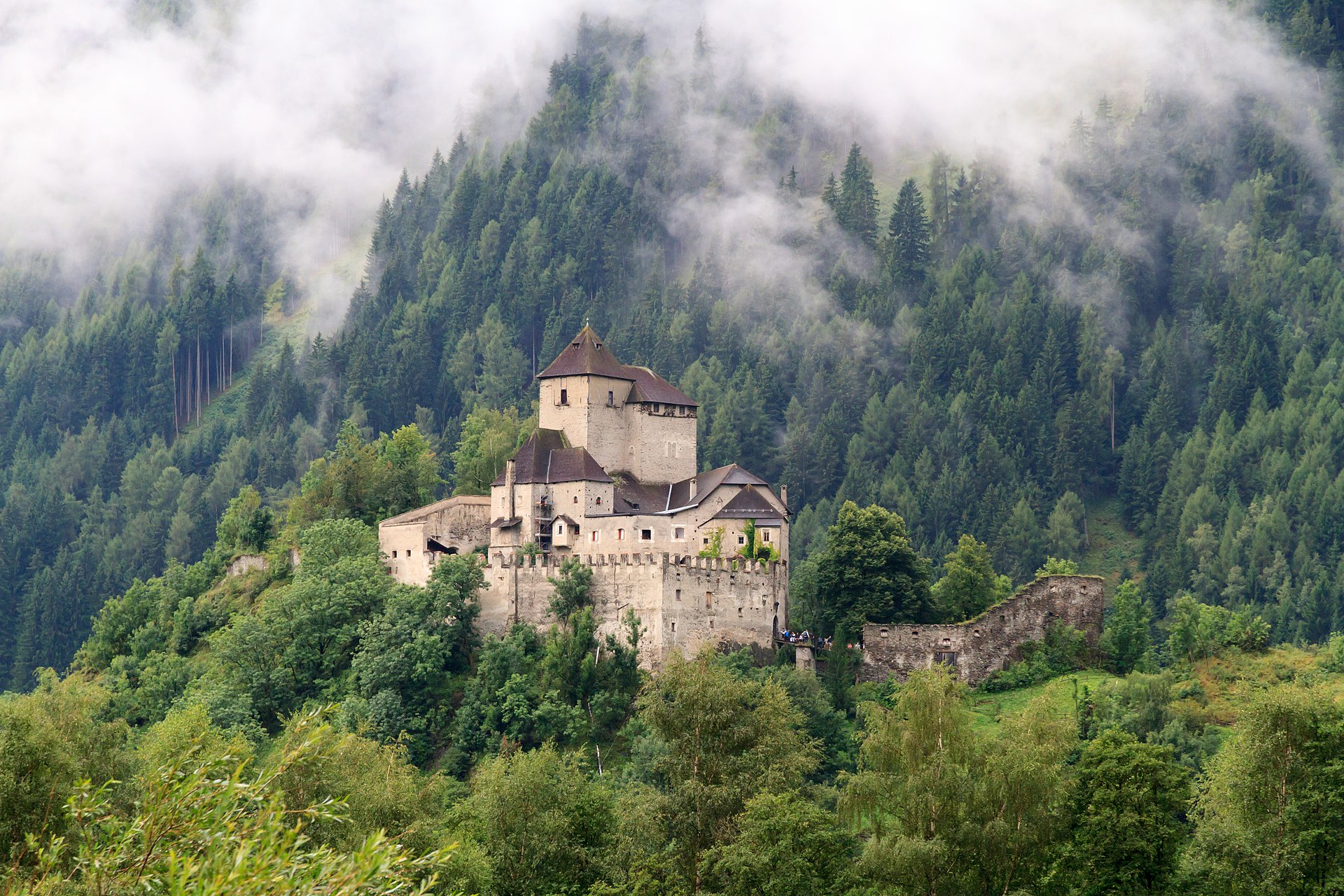Reifenstein Castle is located on a rocky hill in the Wipptal valley in the municipality of Freienfeld near Sterzing in South Tyrol.
In the picturesque Wipptal, southwest of Sterzing, the imposing Reifenstein Castle sits atop a majestic rocky hill.
The History of Reifenstein Castle
The history of Reifenstein Castle dates back to 1110, when it was given as a fief to the ministeriales of Brixen from Stilfes-Reifenstein-Welsberg. After the extinction of this family in 1189/90, the Trautson family took over the castle. In 1470, Duke Sigmund of Austria-Tyrol sold the fief to the Teutonic Knights. The castle remained in their possession until the dissolution of the order in 1813 and was expanded and militarily strengthened during this time. Thanks to its impregnable location and robust construction, Reifenstein Castle was never conquered or destroyed throughout its history and is therefore considered the best-preserved castle complex in South Tyrol.
In 1813, the castle was transferred as compensation for the postal regalia owned by the count’s Innsbruck line of the House of Thurn and Taxis in the Kingdom of Bavaria. This line was based at Schloss Neuhaus on the Danube from 1729 to 1868 and operated the Tyrolean postal service until 1769. Since then, Reifenstein Castle has been in their possession to this day.
Structure
The first construction of Reifenstein Castle began in 1110. A mighty square tower was erected and surrounded by a ring wall. The outer bailey served as protection for access to the main courtyard, where the gate was secured by a portcullis. With the advent of large castles at the beginning of the 16th century, the appearance of the castle also changed. Instead of the keep, which served as a residential and defensive tower, a palace was now built around this tower. Thanks to its elevated location, it was not necessary to build a motte.
Inside the palace, there are various medieval rooms, including wooden sleeping nooks, a bathhouse, the castle kitchen, a room with late Gothic wooden paneling, and the so-called Green Hall with late Gothic vine wall paintings and an intricately carved chapel grille. On the castle hill, there is also the small church of St. Zeno, and directly below it, Bavarian tree coffins from the 4th to the 8th century AD were discovered in 1996.
Reifenstein Castle has experienced a fascinating history over the centuries and is a testament to the architectural changes and lifestyle of the time. Its impressive location and well-preserved structure make it a remarkable cultural and historical treasure.









